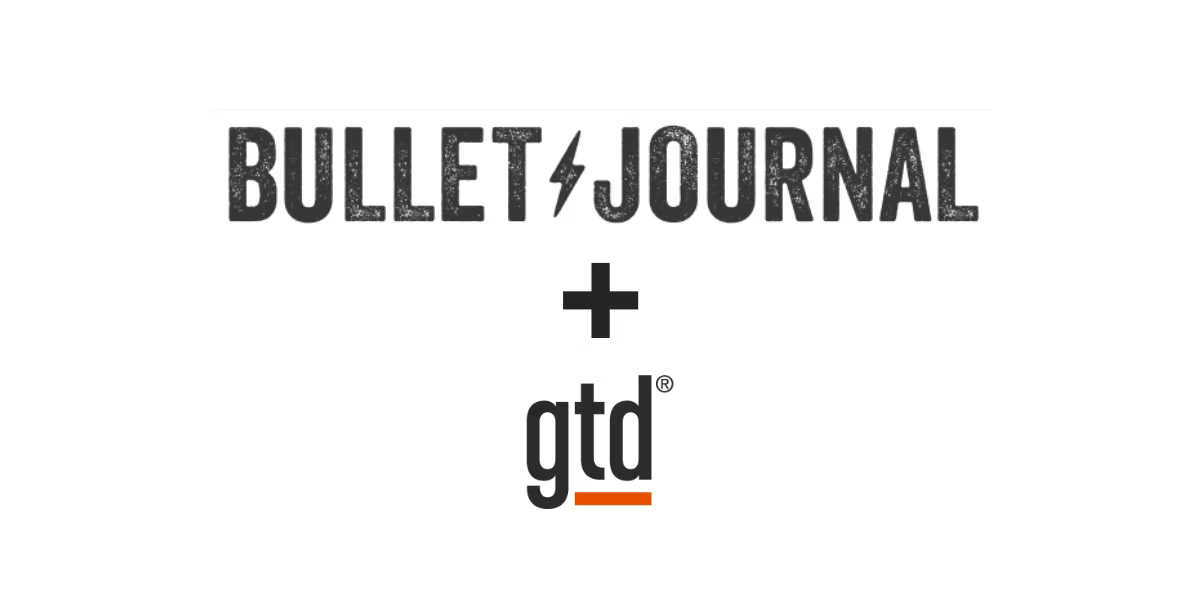The original version of this article first appeared as two separate blogs, “Hacking the BuJo Method for Autistics” and “The Autistic’s Bullet Journal”, which first appeared on Notolux.ca.
I'm an avid journaller and I have been for several years now. So, naturally, when I learned I was autistic I wanted to know if there were any specific spreads out there that I could use.
After a short search on the internet...I found nothing. There weren't any clear and obvious journaling tips for autistic adults.
So I made my own.
I started by thinking about what would help me gain a better understanding of myself now that I know I have autism. Trackers and logs were definitely big ones, but I also didn't know a lot about stims and needed a way to track all these realizations I was having about myself, at present, and in the past.
The Habit Tracker and Self-Care Logs
I began by brainstorming some ideas and thinking about what these spreads might look like. The habit tracker was an easy one, as it is a widely used bujo spread. But I thought about how I would put together a grid to learn more about stimming. And at the bottom I wanted to add in information about burnout and shutdowns/meltdowns along with some self care tips if I experience burnout. It's my own mini selfcare package that includes stimming, special interests, and favourite foods.
I also made a monthly/future log for the first time that would actually be of benefit for me. One of the hardest things for me is keeping track of bi-weekly or monthly tasks like changing my bed sheets or washing my weighted blanket that I sleep with every single night since the day I got it. So I planned out, on every Sunday, I would do one of these monthly tasks. Mostly so I don't go way too long without washing my sheets or my water bottle.
There were also other areas I wanted to explore more, such as masking and what that's looked like in my life so far, and thus how to go about unmasking. I’ve also made lists of my favourite foods, my special interests and hyperfixations, and any repetitive restrictive behaviors I recognize within myself.
Thus, I sectioned these items into logs. A basic table where I can list these types of items and keep track of them.
Gathering all this information together helped me realize specific ways I could use my bujo to help me understand my Autism while also keeping record of my journey and building healthy habits.
Autism Realizations

The spread I use the most, however, is the one I call Autism Realizations. If you've been diagnosed later in life you know exactly what I mean.
For those of you who don't: it basically means we have these moments of clarity or curiosity where we realize something we did as a child, or even just the other day, can be linked to autism.
For example, I have always sucked at sensing when I'm hungry or thirsty and will wait until I'm starving to realize I need to eat. This is what we call poor interoception, which is very common in autistic people.
I like to write these things down as I think of them. For one, it gets it out of my head and onto paper, and two, it acts as a record of my autistic journey that I can look back on. I also believe it could be useful if I ever need to explain Autism to someone and how it's affected me personally as with this spread, I can provide very specific examples.
Hacking The Bujo Method For Autistics
Since I'm always trying to improve my bujo practice and make it even better I also “hacked” the traditional bujo system when I ordered a beautiful gold Leuchtturm1917 on Amazon (despite disliking change, I do like choosing a different coloured journal when I need a new one - no, I don't know why).
Here I’ve compiled an adjusted system of The Bullet Journal method with reasons why it'll work for our autistic brains.
The Key

I never understood the use of a Key, but as life gets more complicated and I have more to keep track of, I started to see its purpose. I've kept it simple and to the point due to Ryder's advice to not go crazy with signifiers.
Symbols
I have a way to show when:
- A task is completed
- A task needs rescheduling
- A task has become irrelevant
There are also symbols for notes and events (such as appointments or meetings), as well as two signifiers to mark ideas and important tasks. This helps streamline my daily journaling and makes it easier to flip back through past dates and understand what I did and didn't do that day.
Colour-Coding
I've also added a few colour-coding items to this Key.
I needed a way to visually separate personal tasks with work tasks as I didn't want to complicate things with a second journal (I've tried that, it doesn't work). Now, I use a different colour when marking work tasks versus personal ones.
Since starting my own business (and slowly piecing it all together) I also wanted a way to keep track of business tasks, notes, and ideas so I dedicated a colour to it. I did the same thing for Autism related spreads and went with a bold red.
The Future Log

Like the Key, I saw little need for a full future log. I have my phone's monthly calendar for that. However, I've come to learn I need to start thinking more long-term. A difficult thing to do when your brain's wired for details and not the big picture.
Future Goals
The purpose of a future log, for me, is to actually schedule long-term goals, break them down into monthly goals, and then specific tasks within that month.
For example, my reading goal this year was 25 books. By the time October rolled around I realized I was a little (a lot) behind schedule. So, I did some mental math and realized I needed to read three books during November and December, as long as I finished my current read by the end of October.
I actually used sticky notes to section out how many pages I needed to read in a day until the month ended. This averaged out to about 30 pages, which I can read no problem. Then, I continued this process. Thirty days in a month, three books, that's ten days to read a book.
*Side note: using sticky notes is also helpful for getting past that first third of a book which is mostly exposition and setting up the story.
The Monthly Log

This brings us to the monthly log. By planning everything out for the month in the future log, the monthly log is just a transfer of information.
Monthly Goals
I also break down those long-term goals into smaller ones, as I mentioned above. I create a checklist for goals next to the monthly calendar. For example, I write down which books I plan to read that month in the goals column, and then the day I need to finish it in the Calendar column.
I'll admit everything so far does take some time to plan and set up, but it's a process I believe to be worthwhile as it has been working for me for the past couple months.
Mood And Activity Tracker
My mood and mental health has been all over the place recently due to the amount of change I've experienced (moving out, having my work hours drastically cut, having to find new clients, starting my business, etc.). It's been quite an ending to this already interesting year.
Now, I journal every day, and I have been for a long time, but going back and reflecting on those journal entries is not something I do. I thought maybe that's what needs to change, maybe there are some patterns I can find, certain activities that drain my energy versus ones that bring me energy.
As you can see in the picture above, I have a colour-coded scale to track my mood and two columns to record activities that give me energy vs. ones that do not. I also give the overall week a colour so I have a sort of median mood I can examine later on.
The Daily Log

As I said, I've been journaling for several years, and this is the first time I've used a daily log. I used to use a weekly one, but I wanted a way to integrate my long-form journaling with my daily schedule.
Because of the future and monthly log set up, I don't need a weekly overview anymore. This allows me to take one day at a time. It also helps me:
- Not become overwhelmed with everything that needs to happen that week
- Satisfies my detail-oriented brain
- Slow down and not try to do everything at once
Here's how I set up my daily log:
To keep things simple for every day, I split a page in half. Tasks on one side, journaling on the other.
If I happen to need more room for journaling I carry on to the next page. If I don't use an entire page in one day, I don't worry about wasted space and start on the next page as well.
Collections

I know this has been said before, but honestly collections are great for special interests.
Anything that piques my interest, a new idea that pops into my head, I can just flip to the next spread and start writing. This is how I worked through Building a StoryBrand by Donald Miller, and marked important things from unmasking Autism by Devon Pierce.
The Index

I saved the index for last, because I wanted to show how I catalog all of the above spreads into my index.
Typically you write the page number and title on each line. I started listing multiple pages on one line next to the title. But even this wasn't working quite as well for me. So, I put a short title where the page numbers should go and listed the numbers where the title should go.
As you can see the Daily logs use the most amount of pages and before I was trying to squish as many page numbers onto one small line. You can use whichever index system works best for you, but this is what works for me.
Final Thoughts
If any of you made it to the end of this post, I appreciate it. Truly. If you use any of these tips or have more of your own feel free to leave a comment below.
About the Author

Brittany Luckham is a writer and freelance marketer from Ontario, Canada. She writes about her journey as a late-diagnosed autistic adult, her passion for all things writing and reading, and self-improvement advice on her blog. Discover more of what she’s up to at linktr.ee/notolux.






Gideon
January 15, 2024
Your article is very useful for me. I am particularly interested in the part of future goal in future log. Would you mind elaborating a bit more in concrete? Because I always have doubt on how to move tasks or goals I set from mental inventory to future log, monthly log or weekly log. I got problems on the inter-tracking and planning.
Thank you for posting this wonderful sharing!
Gideon